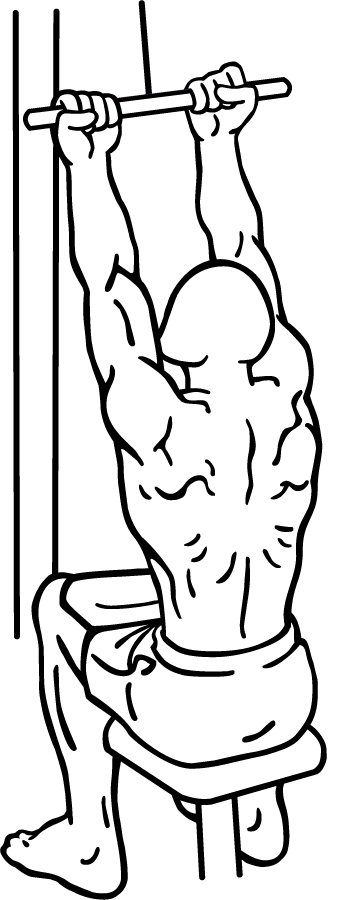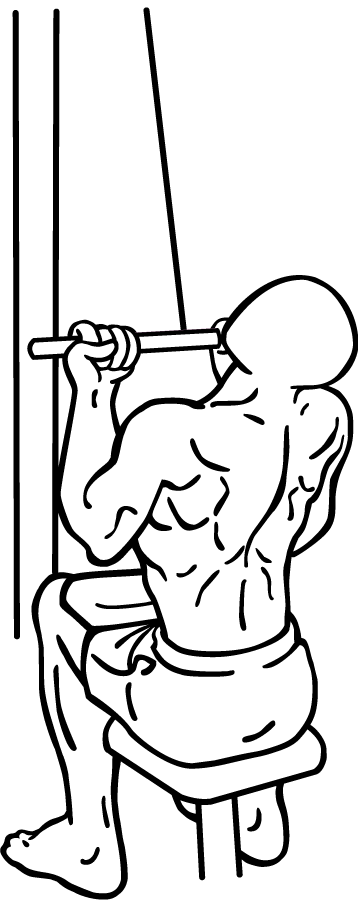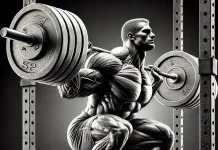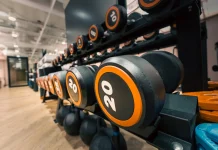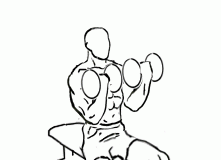Last Updated on February 1, 2025
The Underhand Lat Pulldown, also known as the Reverse-Grip Lat Pulldown, is an excellent exercise that targets the latissimus dorsi (lats) while also engaging the biceps more than a traditional overhand grip lat pulldown. It helps develop upper body strength, improve posture, and enhance muscle definition.
Muscles Worked
- Primary: Latissimus dorsi (lats)
- Secondary: Biceps brachii, brachialis, brachioradialis, rear delts, traps, and core stabilizers.
Benefits of Underhand Lat Pulldown
- Stronger Biceps Engagement – The supinated (underhand) grip shifts more emphasis to the biceps, making it an excellent choice for arm development.
- Greater Lat Activation – Helps in building a wide and strong back by emphasizing lat engagement.
- Improved Posture & Pulling Strength – Develops pulling strength, which translates into better performance in exercises like pull-ups and rows.
- Reduced Shoulder Strain – The underhand grip can be more shoulder-friendly for some individuals compared to the overhand grip.
How to Perform the Underhand Lat Pulldown Properly
1. Setup Position
- Sit on a lat pulldown machine and adjust the thigh pad so that your legs are securely held in place.
- Grasp the lat pulldown bar with an underhand grip (palms facing you) about shoulder-width apart. A closer grip will activate more biceps, while a slightly wider grip targets more of the lats.
- Keep your chest up, shoulders back, and engage your core to maintain a stable posture.
- Start with your arms fully extended overhead, allowing for a full stretch in the lats.
2. Execution
- Inhale, then pull the bar down in a controlled motion, driving your elbows down and back.
- Focus on bringing the bar towards the upper chest, stopping when it reaches just below your collarbone.
- Keep your elbows tucked in close to your torso throughout the movement to maximize lat activation.
3. Peak Contraction
- At the bottom position, squeeze your lats and biceps for 1-2 seconds to enhance muscle engagement.
4. Return Phase
- Slowly extend your arms back up, allowing the bar to return to the starting position in a controlled manner.
- Ensure a full stretch in your lats at the top without letting the weight stack slam down.
- Exhale as you fully extend your arms while maintaining tension in your back.
5. Repeat
- Perform 3-4 sets of 8-12 reps, depending on your training goals.
Common Mistakes to Avoid
🚫 Using Too Much Weight – Going too heavy can cause improper form, reducing muscle engagement and increasing the risk of injury.
🚫 Leaning Too Far Back – This turns the movement into more of a row rather than a pulldown. Maintain an upright posture with only a slight lean.
🚫 Relying on Momentum – Avoid jerking the weight down or using your legs to generate force. Maintain slow and controlled movements.
🚫 Not Engaging the Lats – Focus on pulling with your back muscles rather than just your arms.
🚫 Not Fully Extending at the Top – Failing to stretch fully at the top limits the range of motion and reduces muscle activation.
Modifications & Variations
✅ Narrow-Grip Underhand Pulldown – Brings more focus on the biceps while still engaging the lats.
✅ Underhand Pull-Ups (Chin-Ups) – A more advanced bodyweight alternative that builds strength in a similar movement pattern.
✅ Resistance Band Lat Pulldown – Ideal for home workouts if you don’t have access to a cable machine.
Pro Tips for Maximum Gains
✔ Control the Movement – Maintain slow, controlled reps rather than rushing through them.
✔ Focus on Muscle Contraction – Actively think about squeezing your lats and biceps at the bottom.
✔ Use a Full Range of Motion – Avoid cutting the movement short; fully extend at the top and pull completely down.
✔ Progressive Overload – Gradually increase resistance over time to build strength and muscle mass.
✔ Pair With Other Exercises – Combine with barbell rows, pull-ups, or deadlifts for a complete back workout.
Conclusion
The Underhand Lat Pulldown is a highly effective exercise for building stronger lats and biceps, improving pulling power, and enhancing overall upper-body strength. By following the correct form, technique, and breathing pattern, you can maximize muscle activation and prevent injuries. Add it to your workout routine and watch your back and arms grow stronger! 💪🔥
